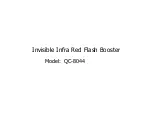
EN
108
Preca
ut
io
ns
a
nd
ca
re
in
str
uc
tio
ns
•
For optimum front lens protection in unfavorable photographic conditions
(e.g. sand, salt water spray), use transparent UVa filters. However, you
should bear in mind that, like all filters, they can cause unwanted
reflections in certain backlight situations and with high contrasts. The
generally recommended lens hood also protects the lens from
unintentional fingerprints and the rain.
•
In addition to the type designation, every lens has its “personal” serial
number. Note this number in your documentation for security.
FOR THE BATTERY
Rechargeable lithium ion batteries generate power through internal chemical
reactions. These reactions are also influenced by the external temperature
and humidity. Very high or low temperatures reduce the life of the battery.
•
Always remove the battery, if you will not be using the camera for a long
period of time. Otherwise, after several weeks the battery could become
totally discharged, i.e. the voltage is sharply reduced as the camera still
consumes a small amount of current (for saving your settings) even when
it is turned off.
•
Lithium ion batteries should only be stored in a partially charged
condition, i.e. not completely discharged or fully charged (in the
corresponding display in the monitor). For very long storage periods, it
should be charged up and discharged again around once a year.
•
Always ensure that the battery contacts are clean and freely accessible.
Whilst lithium ion batteries are proof against short circuits, they should
still be protected against contact with metal objects such as paper clips
or jewelry. A short-circuited battery can get very hot and cause severe
burns.
•
If a battery is dropped, check the casing and the contacts immediately
for any damage. Using a damaged battery can damage the camera.
•
In case of noise, discoloration, deformation, overheating or leaking fluid,
the battery must be removed from the camera or charger immediately
and replaced. Continued use of the battery results in a risk of
overheating, which can cause fire and/or explosion.
•
In case of leaking fluid or a smell of burning, keep the battery away from
sources of heat. Leaked fluid can catch fire.
•
A safety valve in the battery guarantees that any excess pressure caused
by improper handling is discharged safely.
•
Batteries have only a limited service life. We recommend replacing them
after around four years.
•
Take damaged batteries to a collection point to ensure correct recycling.
•
The batteries may not be exposed to heat, sunlight, humidity or moisture
for long periods. Likewise, the batteries may not be placed in a
microwave oven or a high pressure container as this results in a risk of
fire or explosion.
Summary of Contents for M Edition 60
Page 1: ...Leica M Edition 60 Anleitung Instructions ...
Page 2: ...12 14 13 1 2 3 4 11a 5a 5b 5c 11 15 18 6 7 8 5 9 10 15 16 19c 19b 19a ...
Page 3: ...26 19 23 24 25 21 22 ...
Page 4: ......
Page 5: ...Leica M Edition 60 Anleitung ...
Page 7: ...DE 3 ...
Page 20: ...DE 16 Vorbereitungen Bodendeckel schließen 1 2 3 4 ...
Page 27: ...DE 23 Kamera Bedienung ...
Page 53: ...DE 49 Fehlfunktionen und ihre Behebung ...
Page 54: ...DE 50 Anhang ANHANG DIE ANZEIGEN IM SUCHER 1 2 3 ...
Page 67: ...Leica M Edition 60 Instructions ...
Page 82: ...EN 80 Preparations Close the bottom cover 1 2 3 4 ...
Page 89: ...EN 87 Camera operation ...
Page 115: ...EN 113 Malfunctions and their resolution ...
Page 116: ...EN 114 Appendix APPENDIX DISPLAYS IN THE VIEWFINDER 1 2 3 ...
Page 129: ...Leica M Edition 60 取扱説明書 ...
Page 131: ...JP 131 ...
Page 144: ...JP 144 底蓋を閉じる ...
Page 151: ...JP 151 カメラの操作 ...
Page 177: ...JP 177 トラブルシューティング ...
Page 178: ...JP 178 資料 ビューファインダー搭載ディスプレイ 1 2 3 ...
















































